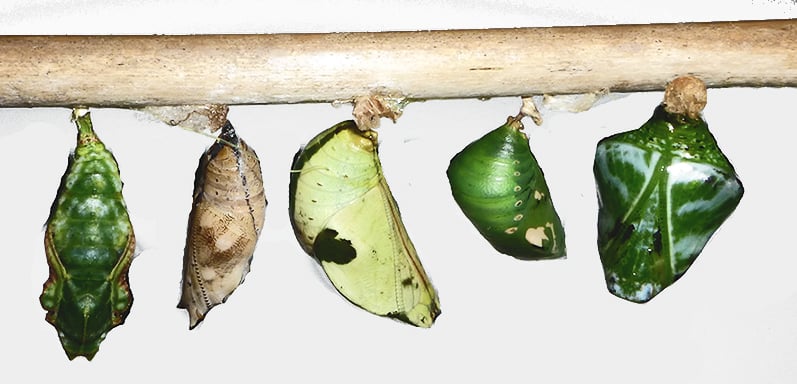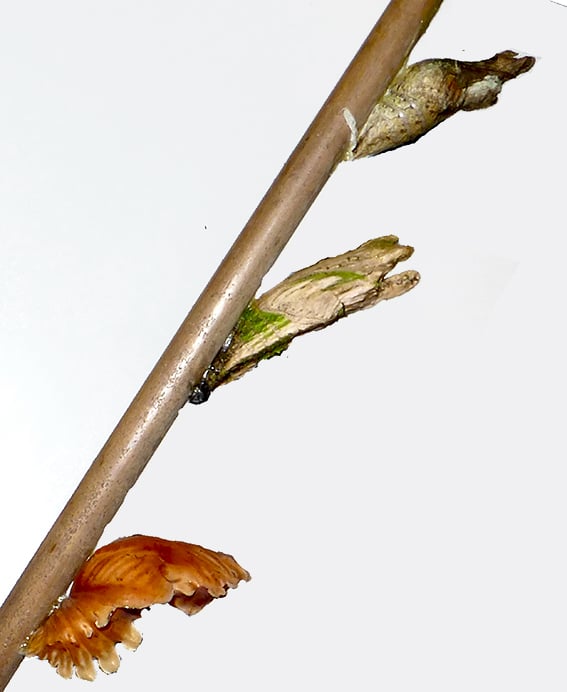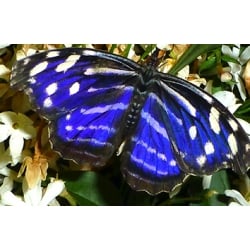- Current EGGS and LARVAE (54)
- EXOTIC BUTTERFLY PUPAE (11)
- MARKET STALL Everything a BARGAIN! (22)
- XXP super fast EXPRESS COURIER DELIVERY (2)
- CURRENT PUPAE - Chrysalides and cocoons (45)
- SILKWORM EGGS and Silkworms (6)
- SPRING and SUMMER EGGS and LARVAE Order now for supply in season (73)
- SPRING and SUMMER PUPAE You can order these NOW in advance (25)
- GIFT SUGGESTIONS (29)
- WINTER PUPAE for breeding in the following season (30)
- CAGES (10)
- PHASMIDS Leaf & Stick Insects, Mantids and more (2)
- SCHOOLS Recommended Livestock (14)
- SLEEVES for REARING LARVAE (7)
- PLASTIC REARING CONTAINERS (2)
- EQUIPMENT (29)
- MOTH TRAPS (7)
- NETTING (3)
- BOOKS (39)
- CHARTS (21)
- SPECIMENS for collectors (151)
- SILK Yarn, Fibres, Silkworm eggs (7)
World Collection of Exotic Butterflies
From several world regions and families. Un-identified, selected for beauty and interest. The pupae alone are things of great beauty and interest. One of the real joys of nature!
Choose between the STANDARD World Collection and the DE LUXE World Collection. Both are varied and interesting. The DE LUXE includes such beauties as the shimmering blue Morpho, Giant Owl Butterflies, Larger exotic Swallowtails, Iridescent blue banded Prepona and the like. The pupae are usually larger and some very intricate. Well worth the difference in price. Some species develop in the pupa quite fast, which is why for international orders it is essential to send by courier, though this does not guarantee safe arrival, particularly in summer and to hot countries. in cooler months pupae usually arrive safely.
Illustrations are representative: yours may not be these species as there are so many to choose from - good value is always assured. When possible 10 different species will be sent though this is not always possible.
IMPORTANT - Please read this guide to hatching of exotic butterfly pupae:
Provide warmth and humidity that the pupae normally experience in the tropics. About 30°C is ideal, and humidity above 70%. The butterflies like a warm greenhouse containing varied plants, especially those producing nectar flowers to feed from, and this is the best place also for the emerging cage for the pupae. Examples of nectar flowers include Ixora, Buddleia, Pentas, Eupatorum, Clerodendrum and most Asteraceae (formerly Compositae). Shade the cage from direct sun, which is too harsh. If you don’t have such an environment, you may be able to simulate a warm and humid atmosphere in another way, but don’t apply direct heat. The whole cage needs to be in an even temperature and humidity, which is best provided in a tropical greenhouse environment. It is usually beneficial to mist the pupae at least once a day. It is normal in nature for night to be cooler than day.
It’s a good idea to suspend the pupae. To do this, use a cane held horizontally. Apply a very thin line of contact adhesive eg Evostick along the cane. Lay the cane on a table and, when it is tacky but not yet set hard, touch the tails of the pupae on the line of glue. Warning: excess glue actually kills the pupa, so use just a very thin line. When the glue has set you can pick up the cane, with all the pupae hanging by their tails from it.

Pupae of the Swallowtail and Pierid families don’t hang from the tail (cremaster), head downwards. They are attached to a twig at the tail, and they use a silk sling around the wing cases to anchor themselves, head upwards and at an angle away from the twig. To simulate this, you can take some lengths of cane. Make a thin line of glue as described above. Lay the cane on a table, then attach the tails of the pupae to the glue line, and touch the abdomen also against the glue line. Once dry, the cane can be arranged standing at an angle against the sides of the emerging cage, or you can arrange them stuck into a block of florist’s foam. There needs to be enough space to allow the emerging butterflies to climb up, expand and dry their wings.

Usually fixing the pupae to a cane helps to give hatching butterflies the best foothold. When fixed to canes pupae are very exposed and can easily dry out. Mist them several times a day. If you don’t wish to glue the pupae to a cane, they can be laid out on corrugated card or other rough surfaces, such as greengrocer’s imitation grass mats or coconut matting, flat on the bottom of the emerging cage. This material may help to keep the pupae moist if you spray them at least once a day. For hygiene the material needs to be cleaned or replaced every few days.
Resulting butterflies do well in a tropical greenhouse, planted with lush greenery and copious nectar-bearing flowers. Some species like to feed from over-ripe fruit. They may live 2-4 weeks in such conditions, exceptionally they can live longer. Kept in a cage in a house, their life may be just a few days, but sometimes longer if they are given fresh nectar flowers each day, and misted to prevent the atmosphere becoming too dry. Non-native butterflies must not be released.















